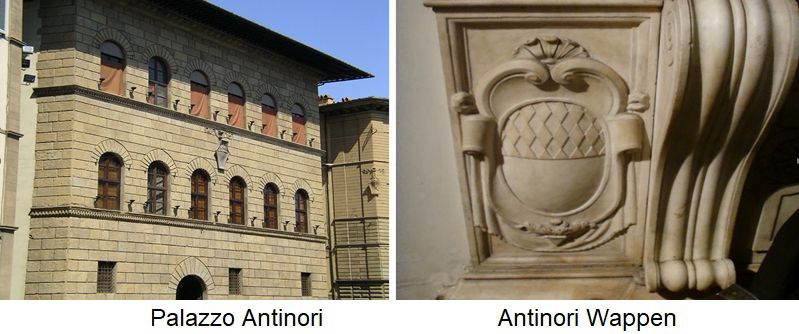Antinori
The famous noble family in Tuscany has been dedicated to viticulture for 26 generations. It is one of the most important wine producers and trading houses and the estate is one of the oldest wine-growing businesses in Italy. It was founded in 1385 by Giovanni di Piero Antinori, whose lifetime also saw the rise of the Medici family in Florence. He came from a Florentine merchant family with a long wine-growing tradition. At the time, the city had gone through many wars and several waves of plague. Together with the silk trade and the international banking business, wine production formed the third pillar of the family's activities. Niccolò di Tommaso Antinori acquired the Renaissance palace in Piazza degli Antinori, built in 1469, in 1506. Subsequently, vineyards and estates were acquired in Tuscany.

Foundation of the current company
In 1898, the two brothers Piero and Ludovico Antinori, together with their brother-in-law Guglielmo Guerrini, founded the current Marchesi Antinori company, originally known as Marchesi L&P Antinori, with the aim of "bringing some order to the various wine-growing activities that had been built up by previous generations of Antinori since the 14th century". During a trip to Champagne in 1905, Lucien Charlemagne (one of the Chefs de Caves) was hired to create the house's first sparkling wine according to the méthode traditionnelle. The next milestone was the Chianti "Villa Antinori" in 1928, which was vinified in a long-lasting style that was new in Tuscany at the time.
More recent history
Niccolò Antinori laid the foundations for the highest quality with premium Chianti and Orvieto wines and continued to successfully expand the company despite the turmoil of the Second World War (1939-1945). In 1966, his son Marchese Piero Antinori (*1938) took over the management. He is regarded as the leading figure of the oenological revolution in Italy, also in connection with the so-called Super Tuscans, who had a significant influence on the quality of Italian wines. Among many other innovations, he was one of the first to experiment with barrique ageing. In 1961, he employed the young oenologist Giacomo Tachis (1933-2016), who had already achieved legendary fame during his lifetime. He initiated the use of the Cabernet Sauvignon grape variety...
Voices of our members

As honorary chairman of the Domäne Wachau, it is the easiest and quickest way for me to access the wein.plus encyclopaedia when I have questions. The certainty of receiving well-founded and up-to-date information here makes it an indispensable guide.
Hans-Georg Schwarz
Ehrenobmann der Domäne Wachau (Wachau)